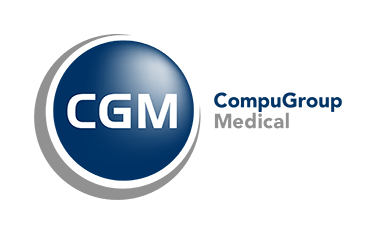Physician credentialing and provider enrollment are two terms that are often used interchangeably, however, there are distinct differences between the two. Let's clarify the differences and understand what each one is and when they are required.
Physician credentialing
Think of physician credentialing or medical credentialing as a background check. It’s the process of verifying the qualifications of licensed professionals and assessing their background and legitimacy. This includes Primary Source Verification (PSV) of education, training, residency, malpractice history, and other requirements.
When do you need physician credentialing?
There are several situations where physician credentialing might be required, including:
- When a new provider onboards at your facility
- When a provider is applying for privileging at a hospital
- When you need professional licensing in or out of state
- When applying for a telemedicine license
- When applying for a DEA license
Provider enrollment
Provider enrollment, also known as payer enrollment, is how you get paid with government and commercial payers. It is the process of requesting participation in a health plan network. Once you are approved you are considered “In-Network” for that payer. By offering a variety of In-Network payer options to your patients, you can expand you network and grow your practice.
When do you need provider enrollment?
There are two situations where you would need provider enrollment:
- Adding a new insurance to your practice portfolio
- Adding a new provider to an existing payer
What's required as part of the credentialing and enrollment process?
Physician credentialing and provider enrollment is paper-intensive. You will be asked to provide a variety of information including, but not limited to:
- NPI number
- Professional licensure in your state of practice
- Board certificate or training in your specialty
- Current CV (MM/YY format with current employer listed)
- Valid DEA (CDS, if applicable) license in your state of practice
- Active hospital affiliation
- Collaborative/supervising agreement (Mid-levels)
- Current professional liability insurance
- Driver’s license
- Malpractice statements/case explanations
- Place of birth
To help cut down on the paperwork, establishing a CAQH profile for your providers will help. CAQH enables the provider to enter their information into a secure database and authorize payers to access that information, cutting down on the manual completion of paper applications.
Benefits of a CAQH profile include:
- It’s a secure database that authorized healthcare plans access for credentialing purposes
- Most major health plans utilize a provider’s CAQH record in lieu of a uniform application
- There is no charge to create and maintain a provider’s CAQH record
- A CAQH record reduces errors and improves efficiencies
What are some of the pitfalls of medical credentialing and provider enrollment?
The credentialing process is a labor-intensive processes. You need people to manage the workflow, enter the data, fact-check the reporting, and the list goes on. Not having the appropriate allocation of staff can lead to mistakes. This is one of the most common pitfalls practices encounter.
Another pitfall is letting CAQH lapse. Once established, CAQH profiles need to be re-attested and updated. You must also keep your credentialing contacts current. By being proactive and updating CAQH right when you receive an updated insurance, license, or DEA document, you can avoid issues.
Not creating a sustainable and scalable process is another common pitfall. Practices that are managing their own credentialing and enrollment efforts should develop policies and procedures to help manage the workflow. They should address the “who, what, when, and where” of commercial and government payer enrollment and credentialing.
More importantly, you want to make sure your process is clearly understood by staff and repeatable every time credentials need updating or an enrollment is required.
Ultimately, you can avoid these pitfalls by dedicating a resource to submitting, monitoring, and maintaining provider credentials, centralize the credentialing function for your organization, and create a repeatable, scalable workflow.
Why is physician credentialing and provider enrollment important?
Credentialing and enrollment are the starting point of your practice’s revenue cycle. You need to be credentialed (approved) to practice, and you need to be enrolled to get paid. Any delays or lapses with either process can have a significant impact on your cash flow.
If you need credentialing or enrollment services, ARIA Credentialing and Enrollment Services can help. Contact us today for a proposal and project quote


